




A look at mass transport deposits in outcrop
This is part of the How To…series on describing sedimentary rocks – mass transport deposits in outcrop.
The images shown here illustrate some of the sedimentary facies, the soft-sediment deformation structures, and associated turbidite facies commonly encountered in MTDs.
Mass Transport Deposit, or MTD is the term given to slumps, slides and debris flows, mostly generated on relatively high angle slopes between the shelf or platform margin, and deep-water settings at the base-of-slope and beyond. The term is generally reserved for sediment packages that move and deform en masse under the influence of gravity, commonly in multiple events. Note that debris flows are included because many – most involve cohesive sediment mixes, where the mechanics of emplacement are akin to plastic flow. Turbidites (and turbidity currents) are not included because they evolve from single event turbulent suspensions of sediment (viscous fluids). This may seem a bit arbitrary, given that some debris flows lack cohesion, develop stratification and may also represent single depositional events (a couple of examples shown below). However, it is also generally recognised that debris flows and turbidity currents represent a continuum of depositional processes.
There is a close association between MTDs and autochthonous slope deposits (mud-dominated) and turbidites in submarine fans. MTD packages commonly overlie undisturbed turbidite assemblages, and in turn are overlain or draped by them. Slump, slide and creep components of MTDs generally consist of deformed turbidites and related depositional assemblages.
MTDs develop via a range of emplacement mechanisms and mechanical processes; most sediments will be ‘soft’, unconsolidated or only mildly so, and have high interstitial fluid contents (usually seawater). Sedimentary layers may bend and fold as hydroplastics under modest strain rates, or break like brittle materials under high strain rates (faults and fractures). Liquefaction is common, where sediment becomes fluidal. All these mechanisms may occur in the same structure. The deforming sediment package may also generate sediment gravity flows such as debris flows and turbidites.
There are many excellent publications that detail MTDs; their formation, facies associations, and their significance in sedimentary basin evolution and tectonics. A few of my favourites are listed below.
More images of MTDs and related facies can be accessed in the:
Atlas of synsedimentary deformation,
Atlas of submarine fans and channels, and
Atlas of slope, shelf-break gullies, and submarine canyons.
Related links in this series on outcrops
Sedimentary structures: Alluvial fans
Sedimentary structures: coarse-grained fluvial
Sedimentary structures: Fine-grained fluvial
Sedimentary structures: Turbidites
Sedimentary structures: Shallow marine
Sedimentary structures: Stromatolites
Volcanics in outcrop: Lava flows
Volcanics in outcrop: Secondary volcaniclastics
Volcanics in outcrop: Pyroclastic fall deposits
Other useful links
Sediment transport: Bedload and suspension load
The hydraulics of sedimentation: Flow regime
Fluid flow: Froude and Reynolds numbers
Sedimentary structures: Shallow marine
Liquefaction: More than a sloppy puddle at the beach
Describing sedimentary rocks; some basics
Measuring a stratigraphic section
The first two diagrams show some basic sediment descriptors and terminology, and a typical stratigraphic column drawn from outcrop data. The third graph shows the basic Stress-Strain Rate rheology for different flow types. These are your starting points for describing and interpreting sedimentary rocks and sedimentary structures in outcrop, hand specimen, and core.
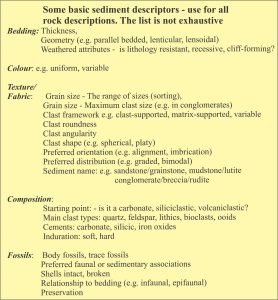
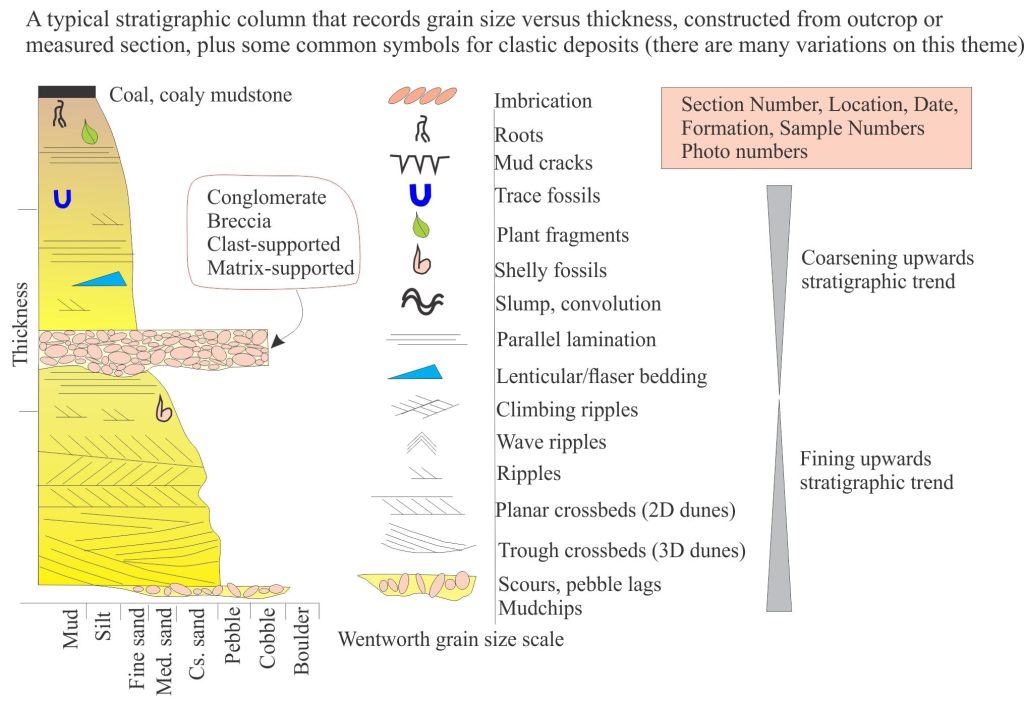
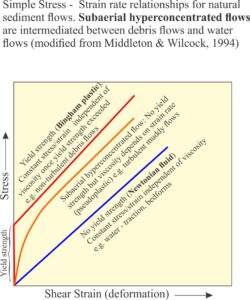
The outcrop images
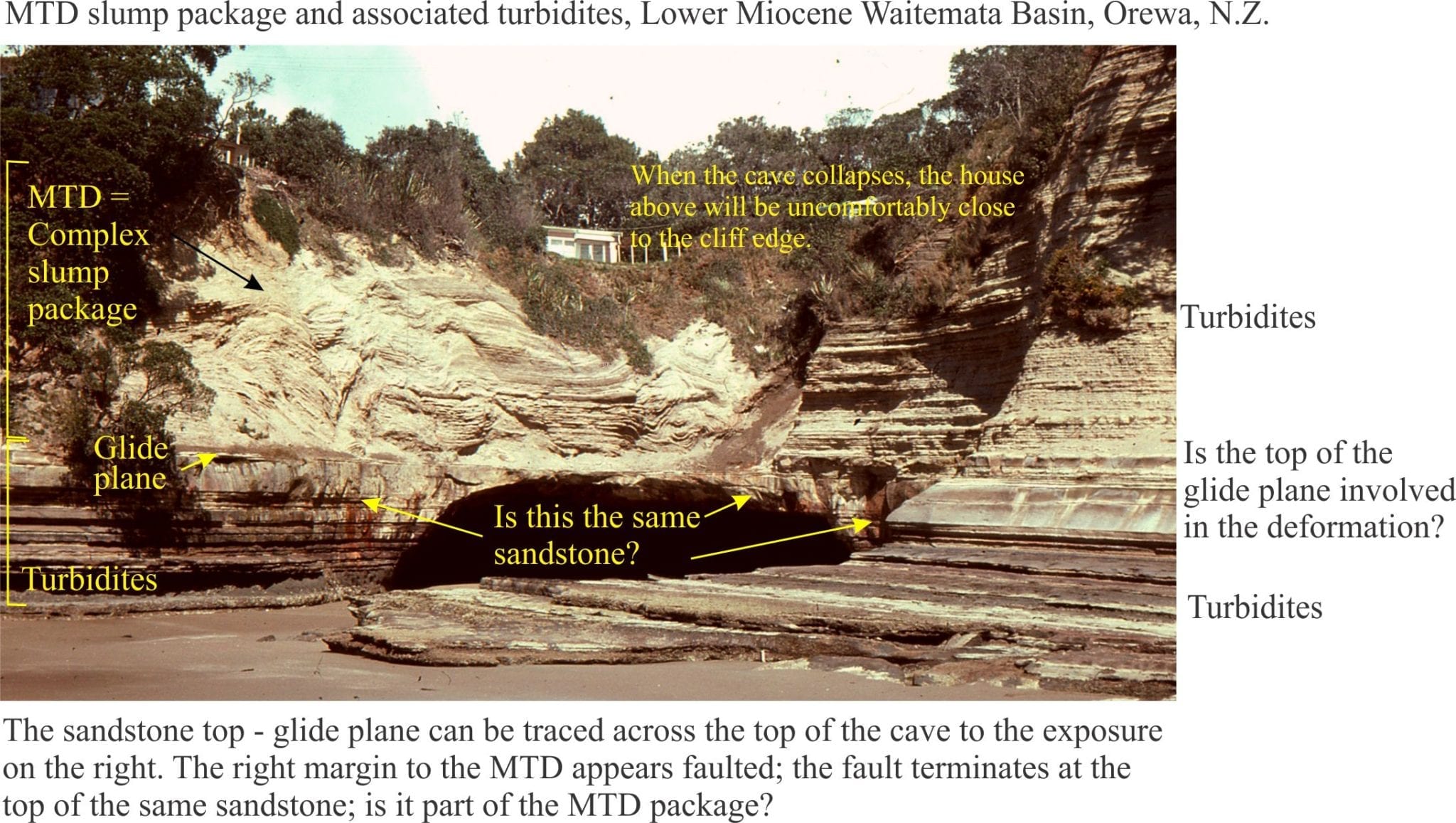
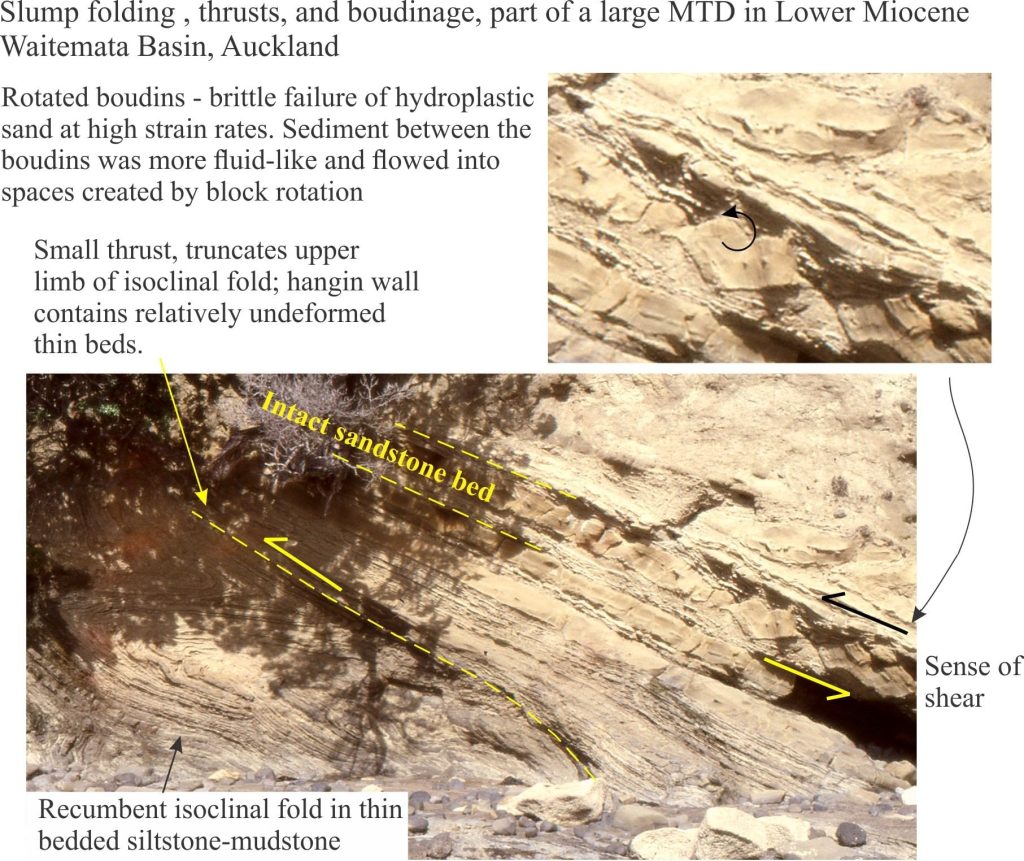
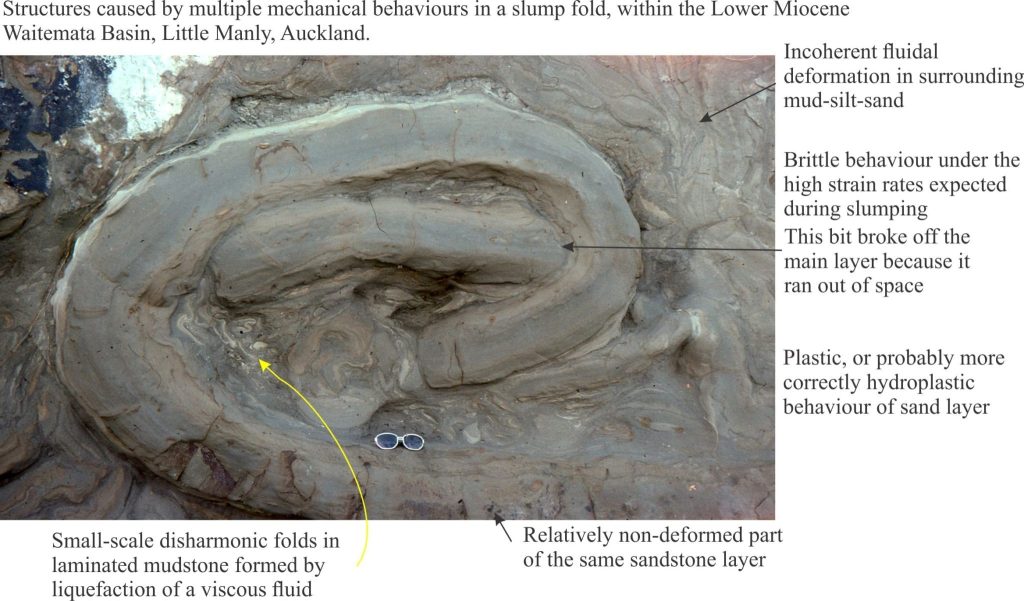
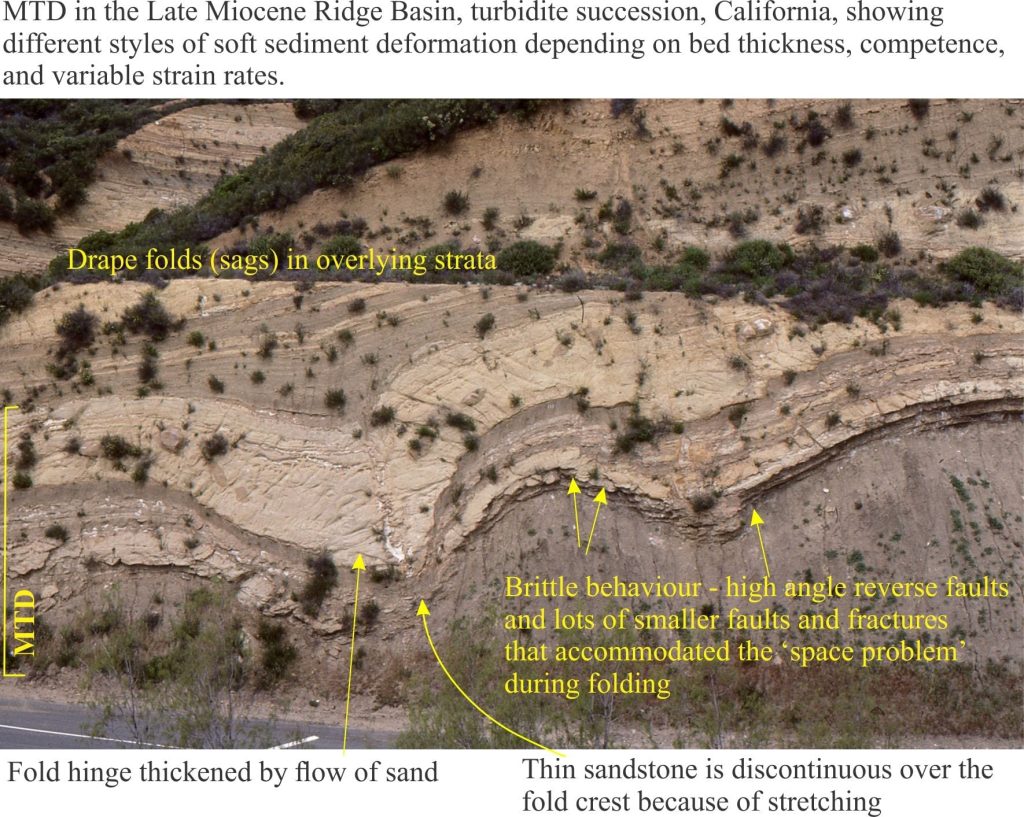
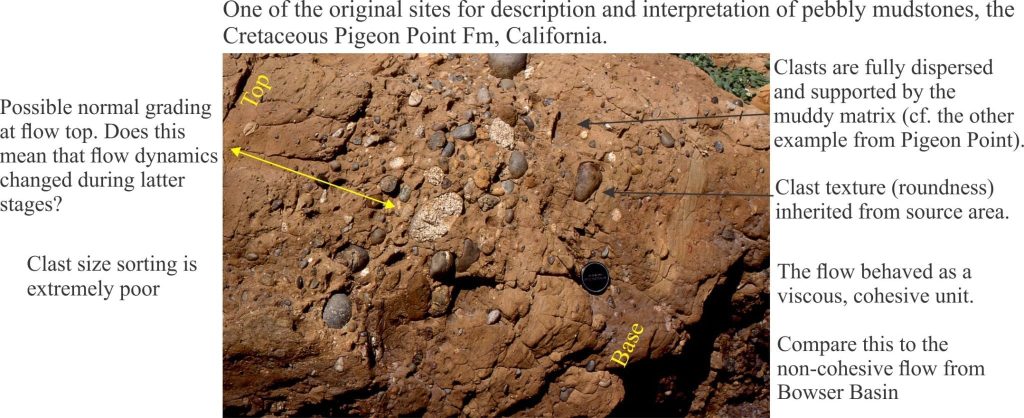
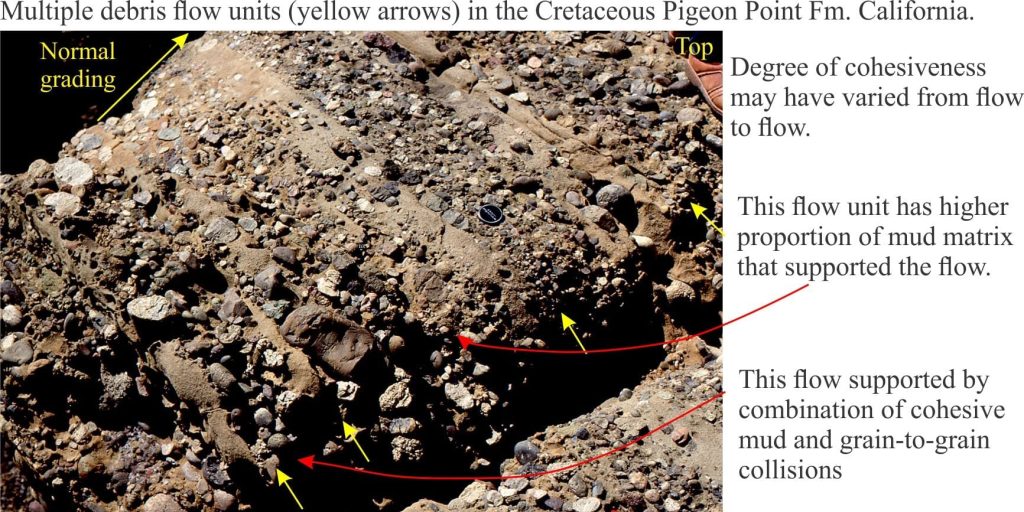
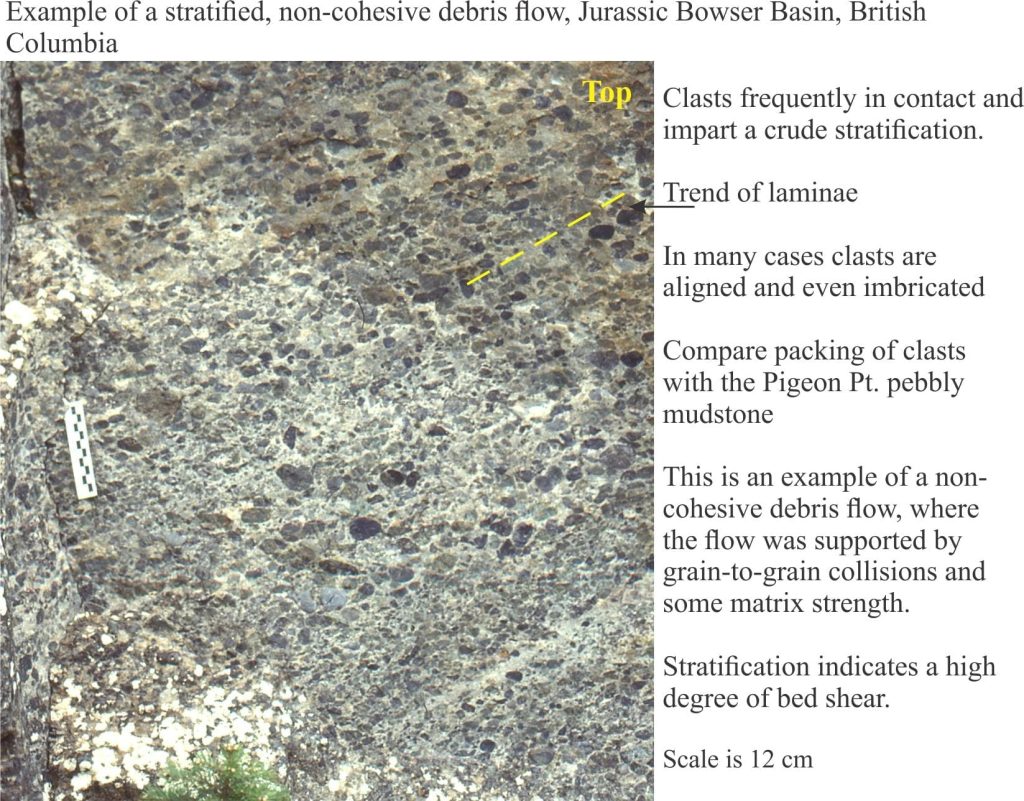
See also A submarine channel complex
References
P.R. King, B.R. Ilg, M. Arnott, G.H. Browne, L.J. Strachan, M. Crundwell, and K. Helle. 2011. Outcrop and seismic examples of mass transport deposits from a Late Miocene deep-water succession, Taranaki Basin, New Zealand. In R.C. Shipp, P Weimer, and H.W. Posamentier Eds.), Mass-Transport Deposits in Deepwater Settings. SEPM Special Publication Volume 96. Fantastic coastal exposures of MTDs, along the North Taranaki coast.
T. Mulder, and J. Alexander; 2001, “The physical character of subaqueous sedimentary density flows and their deposits”; Sedimentology: 48, 269-299
H.W. Posamentier and O.J. Martinsen. 2011. The character and genesis of submarine Mass Transport Deposits: Insights from outcrop and 3D seismic data. In R.C. Shipp, P Weimer, and H.W. Posamentier Eds.), Mass-Transport Deposits in Deepwater Settings. SEPM Special Publication Volume 96.
R.C. Shipp, P Weimer, and H.W. Posamentier Eds.), 2011. Mass-Transport Deposits in Deepwater Settings. SEPM Special Publication Volume 96 Most of the papers in this volume are free access.
D. Stow and Z. Smillie, 2020 Distinguishing between deep-water sediment facies: Turbidites, Contourites, and Hemipelites. Geosciences, v. 10,. Open Access.
























